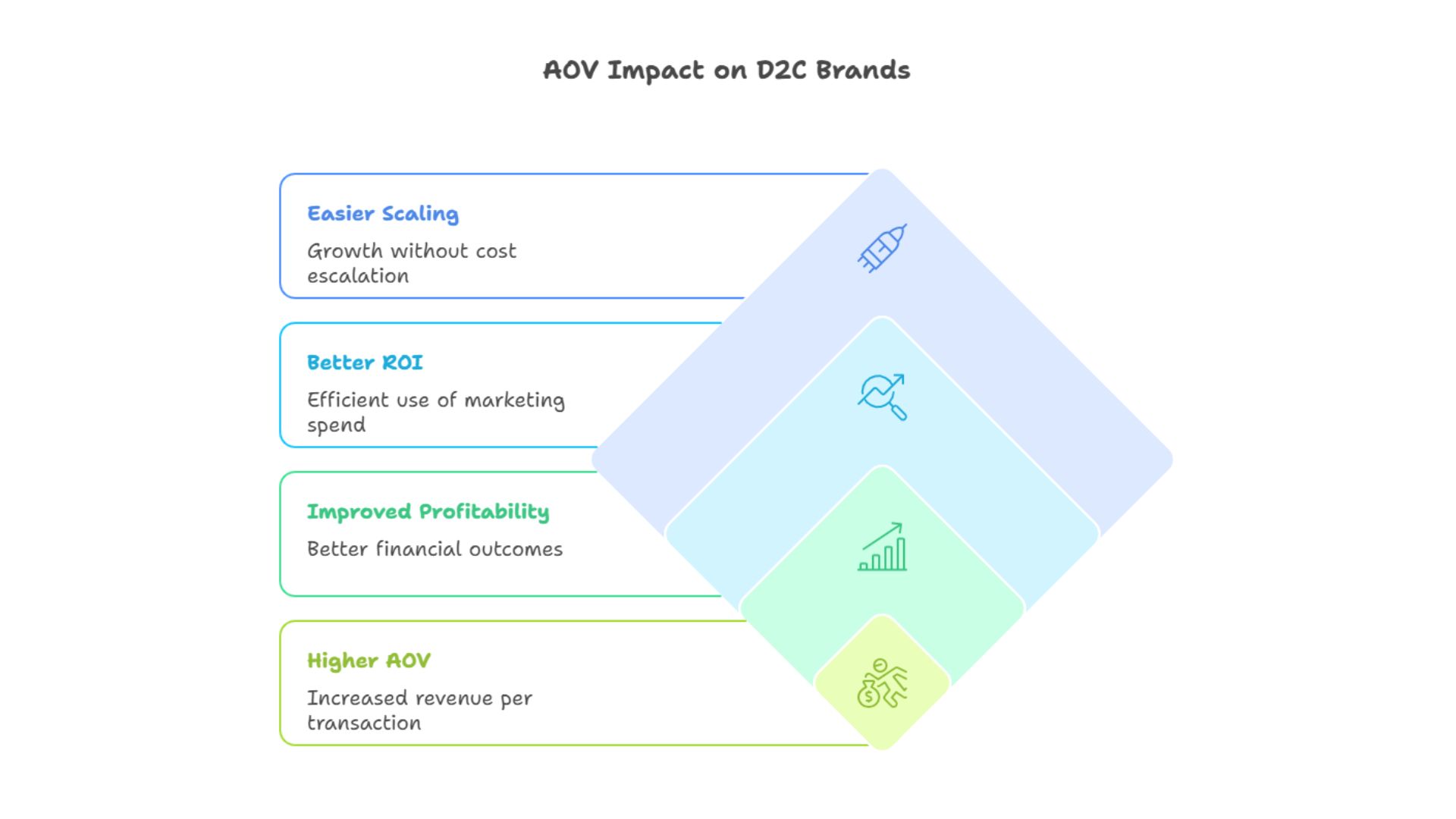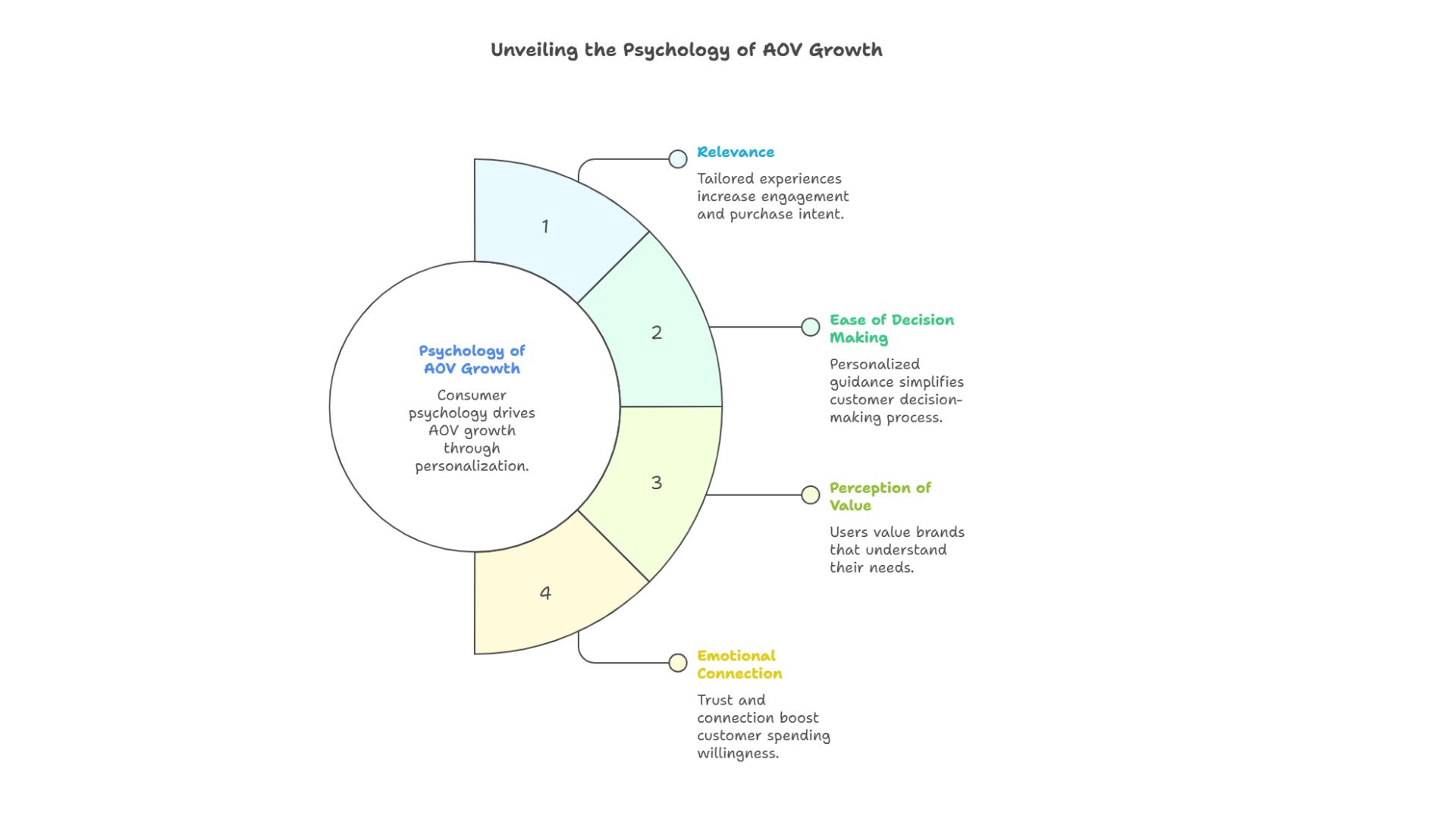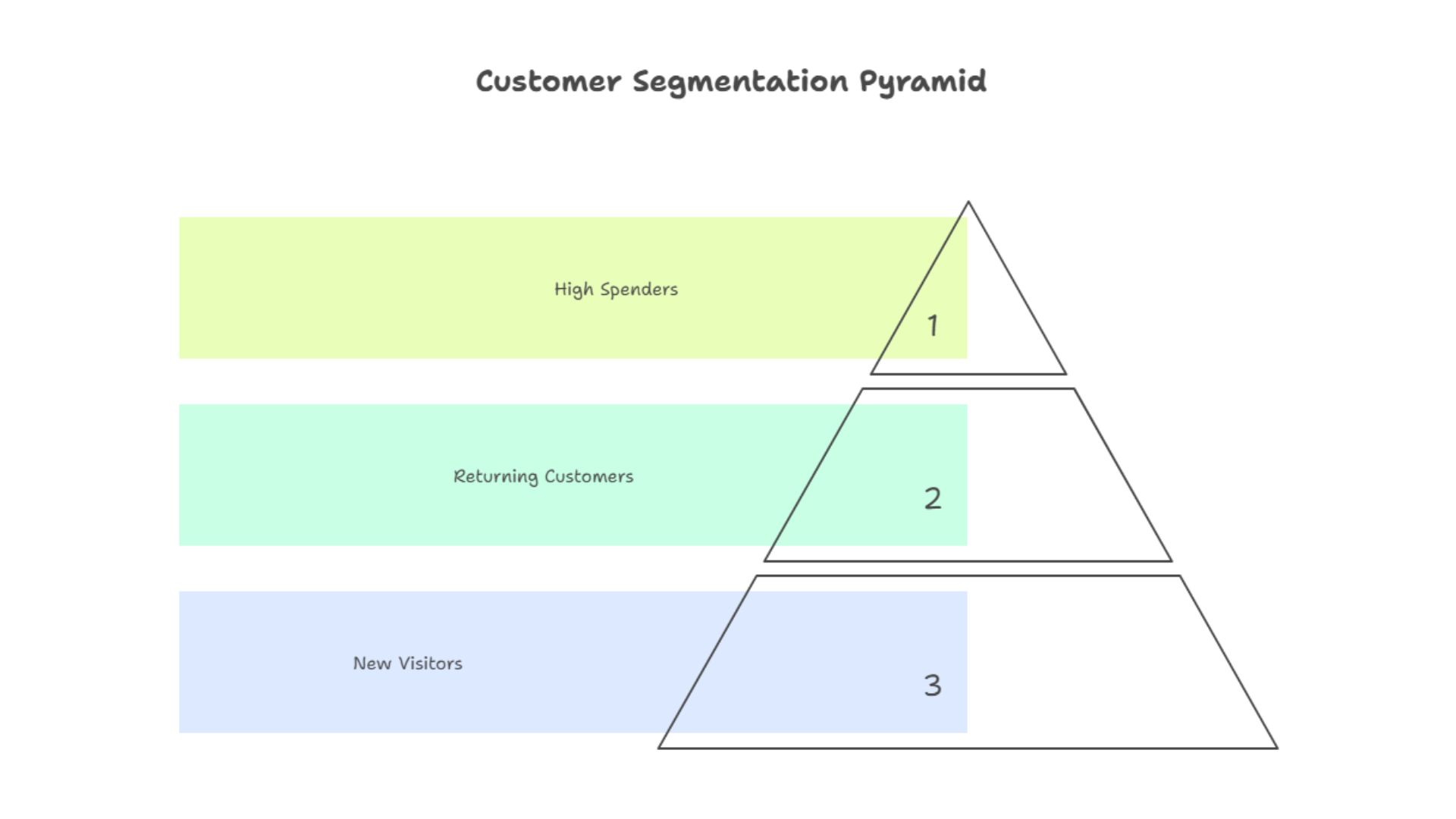In the fast-moving world of ecommerce, growth isn’t just about bringing more traffic. It’s about making every visitor more valuable. That’s where AOV (Average Order Value) comes into play.
For D2C brands, increasing AOV is one of the most efficient ways to boost revenue without increasing ad spend. Instead of chasing more visitors, you focus on encouraging the ones you already have to buy more, or buy better.

And one of the most effective ways to achieve that? Personalization.
Let’s unpack how D2C brands can use personalization to increase AOV, the psychology behind it, and how an intelligent A/B Testing Platform like CustomFit.ai, a subtle yet powerful conversion rate optimization company, can help make it happen.
AOV, or Average Order Value, measures the average amount spent each time a customer makes a purchase.
It’s calculated simply as:
AOV = Total Revenue / Number of Orders
For example, if your D2C brand makes ₹10,00,000 from 1,000 orders, your AOV is ₹1,000.
A higher AOV means you’re earning more per transaction, which directly improves your profitability, especially critical when ad costs are rising.
Increasing AOV means:

Personalization isn’t just a buzzword anymore. It’s an expectation.
Today’s shoppers want to feel recognized, understood, and valued. They don’t want a generic ecommerce experience; they want one that adapts to them, their preferences, their behaviors, and their intent.
For D2C brands, personalization bridges that gap between traffic and transaction value.
When personalization is done right, it impacts key areas of the customer journey:
CustomFit enables seamless A/B testing and personalised optimisation.
The art of increasing AOV is rooted in consumer psychology. Personalization aligns with several proven principles:
When shoppers see products, messages, or offers tailored to their behavior, it feels more relevant, which increases engagement and purchase intent.
A personalized experience reduces the cognitive load. Customers don’t need to browse through endless products; instead, they’re guided toward the most fitting choices.

When users feel a brand “gets” them, they assign higher value to the experience, making them more open to premium products or add-ons.
Personalization creates a sense of connection and trust, two factors that directly influence willingness to spend more.
Now, let’s go deeper into practical, actionable ways D2C brands can use personalization to lift AOV.
Product recommendations are one of the most powerful personalization tools in ecommerce.
Instead of showing random products, use behavior-driven recommendations like:
For example, a skincare brand can show “Complete Your Routine” bundles when a customer adds a cleanser to their cart.
A/B Testing platforms like CustomFit.ai allow D2C marketers to test different recommendation placements, homepage vs product page, before checkout vs post-purchase, to find the one that drives the highest lift in AOV.
A visitor in Delhi might not respond the same way as someone in Bangalore.
Localizing offers and messaging can increase relevance. Examples:
This approach improves engagement and purchase confidence, often leading to bigger cart sizes.
Discounts are great for conversions but can be optimized for AOV.
Instead of blanket discounts, use threshold-based personalization:
These psychological nudges encourage customers to increase their order value intentionally — without reducing margins unnecessarily.
An A/B Test can validate which type of threshold offer performs best for your audience.
D2C brands can create dynamic bundles based on purchase intent.
For example:
When personalization is backed by data, these upsells feel helpful, not pushy.
CustomFit.ai enables you to run A/B tests on upsell placement, testing whether showing a bundle on the product page or during checkout yields a higher AOV lift.
Different visitors have different needs. New visitors, returning customers, and high-value buyers shouldn’t see the same experience.
Examples:
This segmentation increases engagement and encourages larger purchases, directly impacting AOV.

Personalized triggers such as countdown timers or limited-time offers create urgency.
For example:
These subtle reminders tap into urgency without being intrusive, encouraging faster and larger purchases.
Your personalization efforts shouldn’t stop at your website.
Use personalized post-visit communication:
Every message should feel like it’s written for them, not for everyone.
The beauty of personalization lies in continuous learning. You’re never guessing; you’re iterating.
That’s where A/B Testing comes in.
You can test everything, recommendation placements, banner texts, discount thresholds, or homepage layouts, and make decisions backed by real data.
Platforms like CustomFit.ai empower D2C teams to combine A/B Testing with personalization in one workflow:
This combination, personalization + A/B Testing Platform, gives D2C brands a compounding growth advantage.
Imagine a D2C wellness brand selling supplements.
Before personalization:
After running A/B tests with CustomFit.ai on personalized bundles, threshold offers, and location-specific messaging:
Personalization didn’t just improve sales, it made every visitor more valuable.
Personalization delivers compounding ROI because it affects multiple layers of growth:

When implemented strategically, personalization becomes more than a marketing tactic, it becomes a growth system.
While personalization is powerful, doing it wrong can backfire. Avoid these pitfalls:
Q1. What is AOV and why is it important for ecommerce stores?
AOV (Average Order Value) measures the average amount spent per transaction. For ecommerce and D2C stores, increasing AOV means generating more revenue without increasing traffic or ad spend.
Q2. How does personalization help increase AOV?
Personalization tailors the shopping experience to individual users, through relevant recommendations, offers, and messaging, leading customers to buy more or higher-value products.
Q3. What are some effective personalization strategies for D2C brands?
Dynamic product recommendations, threshold offers, personalized bundles, and behavioral triggers like urgency messages are among the most effective.
Q4. How can A/B Testing improve personalization results?
A/B Testing helps identify which personalization tactics actually move the needle. With an A/B Testing Platform like CustomFit.ai, you can test variations and make data-backed decisions.
Q5. Do I need technical expertise to run A/B Tests or personalization?
Not anymore. No-code tools like CustomFit.ai allow marketers to create, test, and deploy personalization directly on their ecommerce store without developer support.
Q6. What kind of AOV uplift can I expect from personalization?
Depending on your current setup, well-executed personalization can raise AOV by 15–40% within weeks.
Q7. Is personalization suitable for small ecommerce brands?
Yes. Even small D2C brands can benefit from personalization, by starting simple with targeted banners or offers, and scaling as they grow.
For D2C brands, growth isn’t about shouting louder. It’s about listening better.
Personalization helps you understand your customers, their intent, their habits, their needs, and respond in a way that feels natural and relevant.
When combined with continuous A/B Testing, it transforms your ecommerce store from a static experience into a living, evolving growth engine.
And while there are many ways to start, having a partner like CustomFit.ai, a subtle yet powerful conversion rate optimization company, helps you navigate that journey faster. It lets you test ideas, personalize at scale, and focus on what matters most, making every visitor more valuable.
Because increasing AOV isn’t just about selling more. It’s about building experiences that make people want to come back.